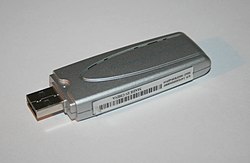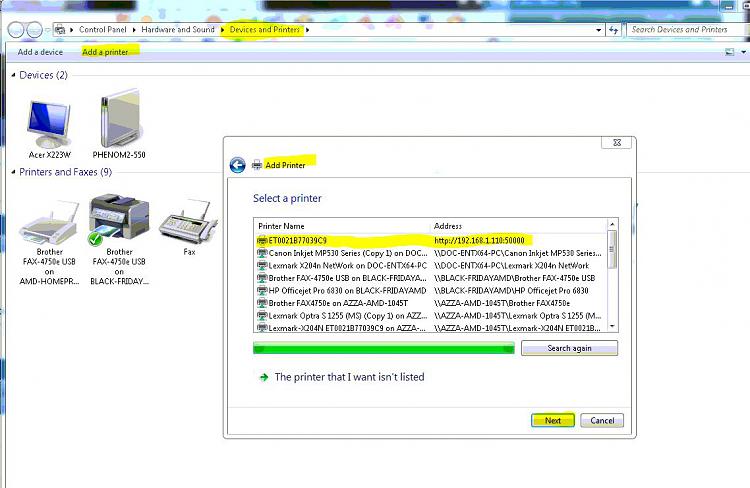A network adapter driver is a program which allows communication between your network connections and your PC. It is recommended you update your network adapter Drivers regularly in order to avoid conflicts. Driver updates will resolve any Driver conflict issues with all devices and improve the performance of your PC. Arch Category Driver Previous Current Status; x64: network: Aquantia 5G Network Addin Card Windows x64 Driver. ReleaseID: FG58X Version: 2.1.1.0 ReleaseID: FG58X. Fix 1- Enable the network driver. If your WiFi network is not visible on your Windows 10, it is happening perhaps because of the WiFi driver on your computer is disabled. Enabling the network driver can fix your problem. Follow these steps to enable the network driver –.
Installs base drivers, Intel PROSet for Windows Device Manager*, advanced networking services (ANS) for teaming & VLANs, and SNMP for Intel Network Adapters for Windows XP*. These downloads do NOT support Microsoft Windows XP for Intel Itanium processors.

Supported Products:
- Intel 82540EM Gigabit Ethernet Controller
- Intel 82540EP Gigabit Ethernet Controller
- Intel 82541EI Gigabit Ethernet Controller
- Intel 82541GI Gigabit Ethernet Controller
- Intel 82541PI Gigabit Ethernet Controller
- Intel 82543GC Gigabit Ethernet Controller
- Intel 82544 Gigabit Ethernet Controller
- Intel 82544EI Gigabit Ethernet Controller
- Intel 82544GC Gigabit Ethernet Controller
- Intel 82545EM Gigabit Ethernet Controller
- Intel 82545GM Gigabit Ethernet Controller
- Intel 82546EB Gigabit Ethernet Controller
- Intel 82546GB Gigabit Ethernet Controller
- Intel 82547EI Gigabit Ethernet Controller
- Intel 82547GI Gigabit Ethernet Controller
- Intel 8254x Ethernet Controllers
- Intel 82550 Fast Ethernet Controller
- Intel 82552V Fast Ethernet PHY
- Intel 82558 32-bit PCI Bus LAN Controller
- Intel 82559 Fast Ethernet Controller
- Intel 82559ER Fast Ethernet Controller
- Intel 82562 Fast Ethernet Controllers
- Intel 82562ET Fast Ethernet Controller
- Intel 82562EX Fast Ethernet Controller
- Intel 82562EZ Fast Ethernet Controller
- Intel 82563 Gigabit Ethernet PHY
- Intel 82564 Gigabit Ethernet PHY
- Intel 82566 Gigabit Ethernet PHY
- Intel 82567 Gigabit Ethernet Controller
- Intel 8256x Ethernet Controllers Intel 82571EB Gigabit Ethernet Controller
- Intel 82572EI Gigabit Ethernet Controller
- Intel 82573E Gigabit Ethernet Controller
- Intel 82573L Gigabit Ethernet Controller
- Intel 82573V Gigabit Ethernet Controller
- Intel 82574 Gigabit Ethernet Controller
- Intel 82575EB Gigabit Ethernet Controller
- Intel 82576 Gigabit Ethernet Controller
- Intel 82577 Gigabit Ethernet PHY
- Intel 82578 Gigabit Ethernet PHY
- Intel 82579 Gigabit Ethernet Controller
- Intel 82580EB Gigabit Ethernet Controller
- Intel 82583V Gigabit Ethernet Controller
- Intel Ethernet Controller I350
- Intel Ethernet Server Adapter I340-F4
- Intel Ethernet Server Adapter I340-T4
- Intel Ethernet Server Adapter I350-F2
- Intel Ethernet Server Adapter I350-F4
- Intel Ethernet Server Adapter I350-T2
- Intel Ethernet Server Adapter I350-T4
- Intel Gigabit CT Desktop Adapter
- Intel PRO/100 M Desktop Adapter
- Intel PRO/100 S Desktop Adapter
- Intel PRO/100 S Dual Port Server Adapter
- Intel PRO/100 S Management Adapter
- Intel PRO/100 S Server Adapter
- Intel PRO/100 VE Desktop Adapter
- Intel PRO/100 VE Network Connection
- Intel PRO/100 VM Network Connection
- Intel PRO/100+ Adapter
- Intel PRO/100+ Management Adapter
- Intel PRO/100+ Server Adapter
- Intel PRO/1000 CT Network Connection
- Intel PRO/1000 GT Desktop Adapter
- Intel PRO/1000 MT Desktop Adapter
- Intel PRO/1000 MT Dual Port Server Adapter
- Intel PRO/1000 PM Network Connection
- Intel PRO/1000 PT Desktop Adapter
- Intel PRO/100B Adapter
Note: Microsoft Windows XP is not supported on 10-gigabit Intel Ethernet Server Adapters.
Here's other similar drivers that are different versions or releases for different operating systems:- August 10, 2020
- Windows (all)
- 562 MB
- August 10, 2020
- Windows 7/8/10
- 61.7 MB
- July 25, 2020
- Windows 7/8/10
- 21.9 MB
- May 2, 2018
- Windows 7/8/10
- 90.2 MB
- May 17, 2017
- Windows 7/8/10
- 93.7 MB
- November 15, 2012
- Windows XP
- 37.2 MB
- August 3, 2006
- Windows 2000/XP
- 16.3 MB
- May 21, 2013
- Windows Vista 64-bit
- 33.8 MB
- May 21, 2013
- Windows Vista
- 29.3 MB
- May 21, 2013
- Windows XP 64-bit
- 19.9 MB
A wireless network at home lets you get online from more places in your house. This article describes the basic steps for setting up a wireless network and starting to use it.
Get the right equipment
Before you can set up your wireless network, here’s what you’ll need:
Broadband Internet connection and modem. A broadband Internet connection is a high-speed Internet connection. Digital Subscriber Line (DSL) and cable are two of the most common broadband connections. You can get a broadband connection by contacting an Internet service provider (ISP). Typically, ISPs that provide DSL are telephone companies and ISPs that provide cable are cable TV companies. ISPs frequently offer broadband modems. Some ISPs also offer combination modem/wireless routers. You can also find these at computer or electronics stores, and online.
Wireless router. A router sends info between your network and the Internet. With a wireless router, you can connect PCs to your network using radio signals instead of wires. There are several different kinds of wireless network technologies, which include 802.11a, 802.11b, 802.11g, 802.11n, and 802.11ac.

Wireless Network Card Driver
Wireless network adapter. A wireless network adapter is a device that connects your PC to a wireless network. To connect your portable or desktop PC to your wireless network, the PC must have a wireless network adapter. Most laptops and tablets—and some desktop PCs—come with a wireless network adapter already installed.
Wireless Network Card For Pc
To check whether your PC has a wireless network adapter:
Select the Start button, type device manager in the search box, and then select Device Manager.
Expand Network adapters.
Look for a network adapter that might have wireless in the name.
Setting up the modem and Internet connection
After you have all the equipment, you'll need to set up your modem and Internet connection. If your modem wasn't set up for you by your Internet service provider (ISP), follow the instructions that came with your modem to connect it to your PC and the Internet. If you're using Digital Subscriber Line (DSL), connect your modem to a phone jack. If you’re using cable, connect your modem to a cable jack.
Positioning the wireless router
Put your wireless router somewhere where it will receive the strongest signal with the least amount of interference. For better results, follow these tips:
Place your wireless router in a central location. Place the router as close to the center of your home as possible to increase the strength of the wireless signal throughout your home.
Position the wireless router off the floor and away from walls and metal objects, such as metal file cabinets. The fewer physical obstructions between your PC and the router's signal, the more likely that you'll be using the router's full signal strength.
Reduce interference. Some networking equipment uses a 2.4 gigahertz (GHz) radio frequency. This is the same frequency as most microwaves and many cordless phones. If you turn on the microwave or get a call on a cordless phone, your wireless signal might be temporarily interrupted. You can avoid most of these issues by using a cordless phone with a higher frequency, such as 5.8 GHz.

Securing your wireless network
Security is always important; with a wireless network, it's even more important because your network's signal could be broadcast outside your home. If you don't help secure your network, people with PCs nearby could access info stored on your network PCs and use your Internet connection.
To help make your network more secure:
Change the default user name and password. This helps protect your router. Most router manufacturers have a default user name and password on the router and a default network name (also known as the SSID). Someone could use this info to access your router without you knowing it. To help avoid that, change the default user name and password for your router. See the documentation for your device for instructions.
Set up a security key (password) for your network. Wireless networks have a network security key to help protect them from unauthorized access. We recommend using Wi-Fi Protected Access 2 (WPA2) security if your router supports it. See the documentation for your router for more detailed info, including what type of security is supported and how to set it up.
Some routers support Wi-Fi Protected Setup (WPS). If your router supports WPS and it’s connected to the network, follow these steps to set up a network security key:
Do one of the following, depending on which version of Windows is running on your PC:
In Windows 7 or Windows 8.1, select Start, start typing Network and Sharing Center, and then choose it in the list.
In Windows 10, select Start , then select Settings > Network & Internet > Status > Network and Sharing Center.
Select Set up a new connection or network.
Select Set up a new network, then choose Next.
The wizard will walk you through creating a network name and a security key. If your router supports it, the wizard will default to Wi‑Fi Protected Access (WPA or WPA2) security. We recommend that you use WPA2, because it offers better security than WPA or Wired Equivalent Privacy (WEP) security. With WPA2 or WPA you can also use a passphrase, so you don’t have to remember a cryptic sequence of letters and numbers.
Write down your security key and keep it in a safe place. You can also save your security key on a USB flash drive by following the instructions in the wizard. (Saving your security key to a USB flash drive is available in Windows 8 and Windows 7, but not in Windows 10.)
Use a firewall. A firewall is hardware or software that can help protect your PC from unauthorized users or malicious software (malware). Running a firewall on each PC on your network can help control the spread of malicious software on your network, and help protect your PCs when you're accessing the Internet. Windows Firewall is included with this version of Windows.
Connect a PC to your wireless network
Select the Network or icon in the notification area.
In the list of networks, choose the network that you want to connect to, and then select Connect.
Type the security key (often called the password).
Follow additional instructions if there are any.
Drivers Start Network Network & Wireless Cards Free
If you have problems with your Wi-Fi network when using Windows 10, see Fix Wi-Fi problems in Windows 10 for advanced troubleshooting info.

Comments are closed.